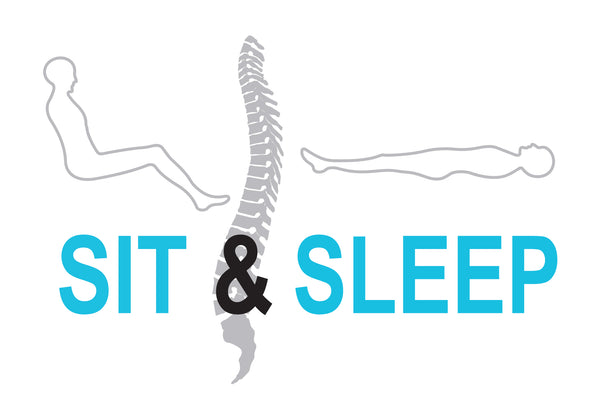Why buy a recliner from Sit & Sleep?
Choosing a new recliner isn't as easy as it seems. Besides your own subjective parameters—the look of a recliner—it's important to have an advisor objectively assess whether the chair is right for you. Size, design, ergonomic reclining features, and more—everything needs to be considered to find the perfect chair. We're happy to provide expert advice to ensure you enjoy your stay to the fullest!
Properties of a good recliner chair
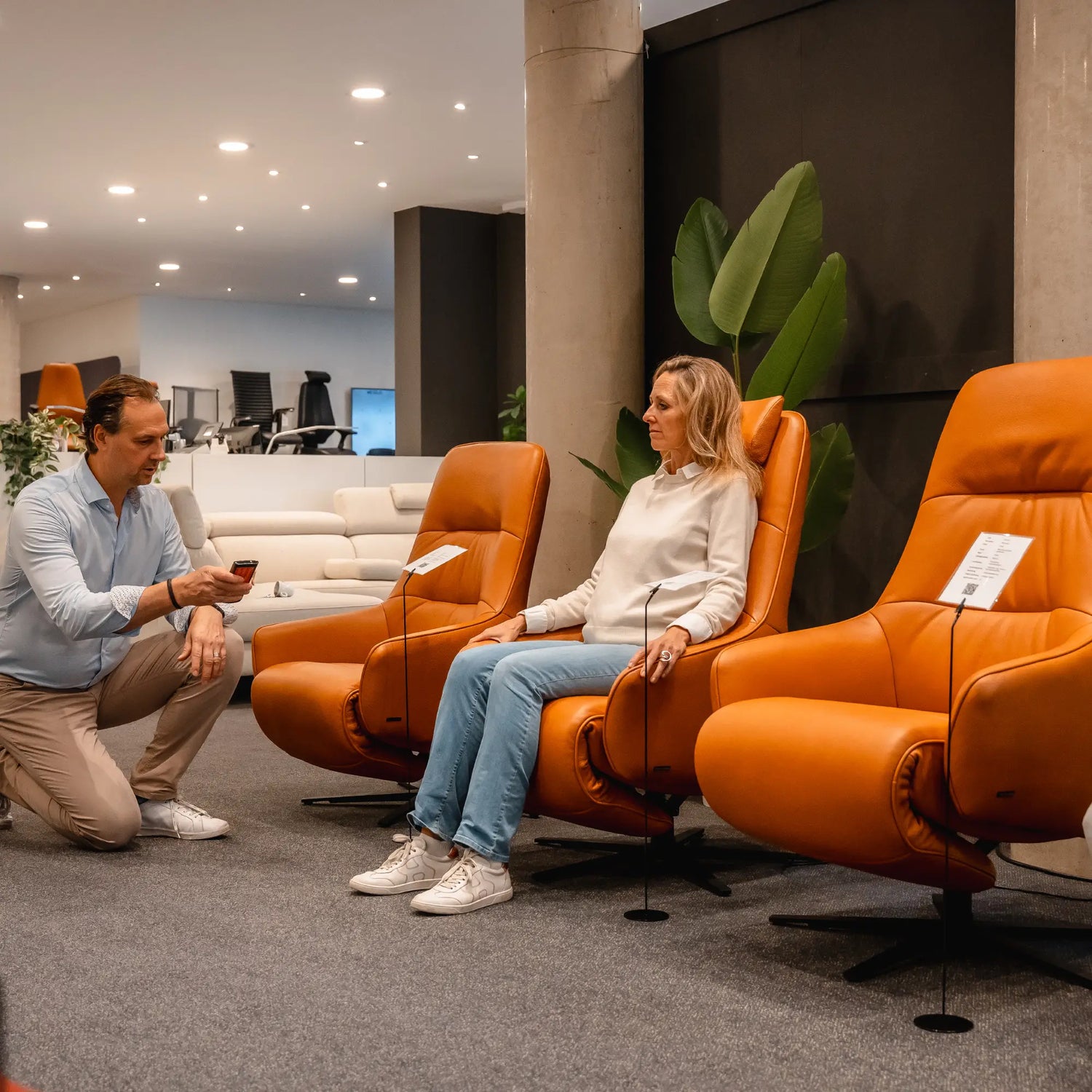
Correct sizing
Manufacturers prefer large production runs to cut costs, making a custom-made recliner more expensive. A compromise is to work with standard sizes, like those used for clothing, but these must fit different body types. Too often, furniture seems designed for unrealistic proportions.
A recliner shouldn't just be beautiful; it should also be ergonomically sound. Sleek designs without the right curves don't offer enough support, as the back simply isn't flat. Correct sizing is therefore crucial for both comfort and health.
-

Seat depth
We recommend a recliner with a seat depth that is shallow enough to ensure excellent back contact.
The starting point is that the edge of the seat should reach the back of your knees. At the same time, you should be able to sit comfortably with your back against the backrest without any gap at the lumbar region. -

Seat height
Choose a seat height that allows you to comfortably reach the floor with your feet. When choosing a sofa, be sure to choose the shoes or slippers you wear at home.
Our recliners are available in different heights, some even with a spindle or gas spring so you can adjust the height. -

Armrests
The armrests should support the weight of your arms so that your neck and shoulder muscles can relax sufficiently.
When sitting upright, high armrests are most comfortable, for example, to rest your arms while holding a book. However, if you want to use the armrests to relax, they're best lower. The width also needs to be right. -

Backrest
The neck support should actually support the neck, not the back of the head. If you plan to use the same seat with several people, the neck support should be height-adjustable, or you can use a separate neck support cushion with a counterweight hanging over the backrest. If you also want to maintain neck support while reclining while watching television, you'll naturally want a neck support that can be tilted.
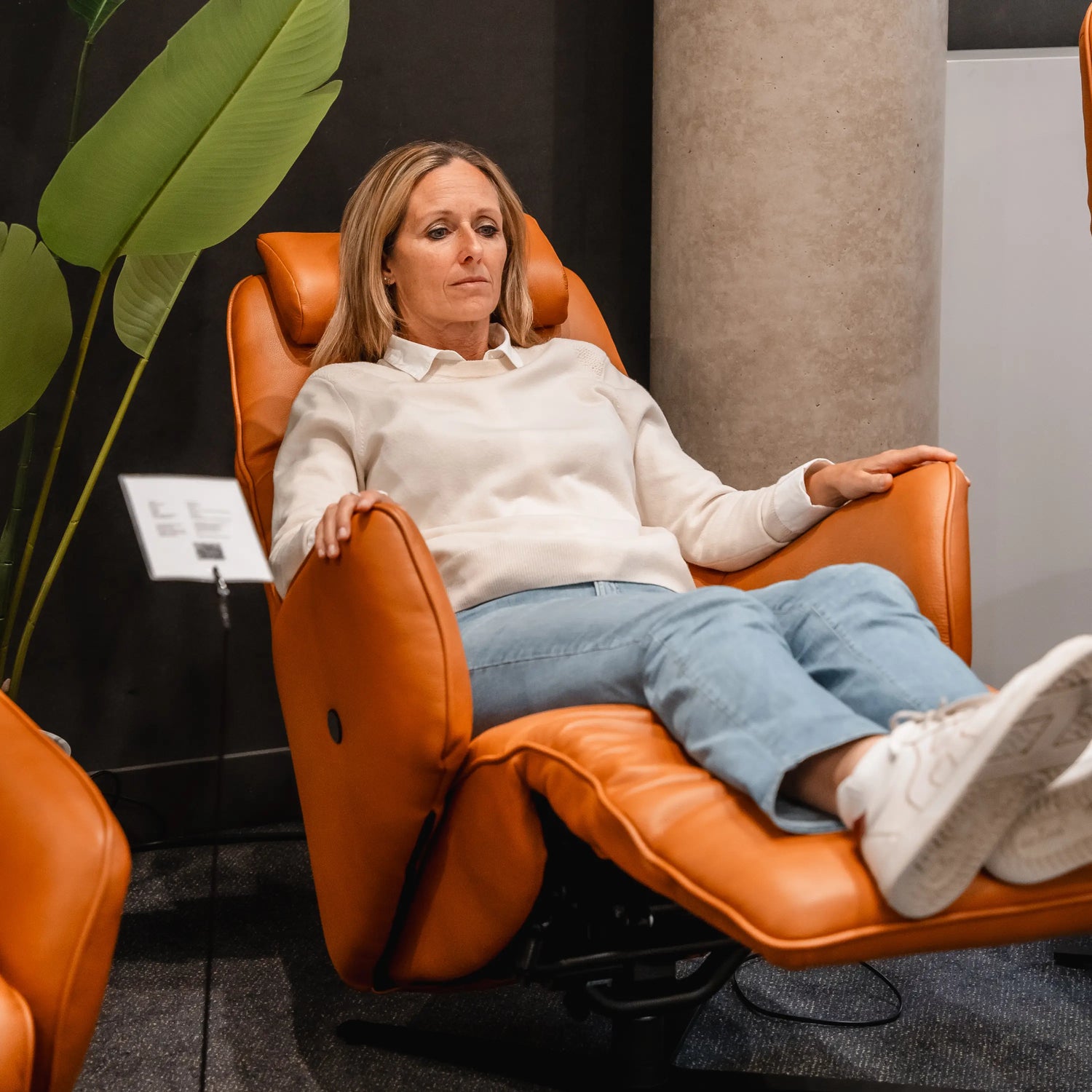
Leg adjustment with knee bend
A good recliner allows your back to maintain its normal curvature. A leg adjustment with a knee bend contributes to this. When you can bend your knees slightly, the muscles in the back of your legs (including the hamstrings and calves) lengthen. This allows you to keep your pelvis in a more correct and relaxed position than when you raise your legs straight up. Many of our recliners also allow you to adjust the backrest and leg sections together to prevent you from slumping.
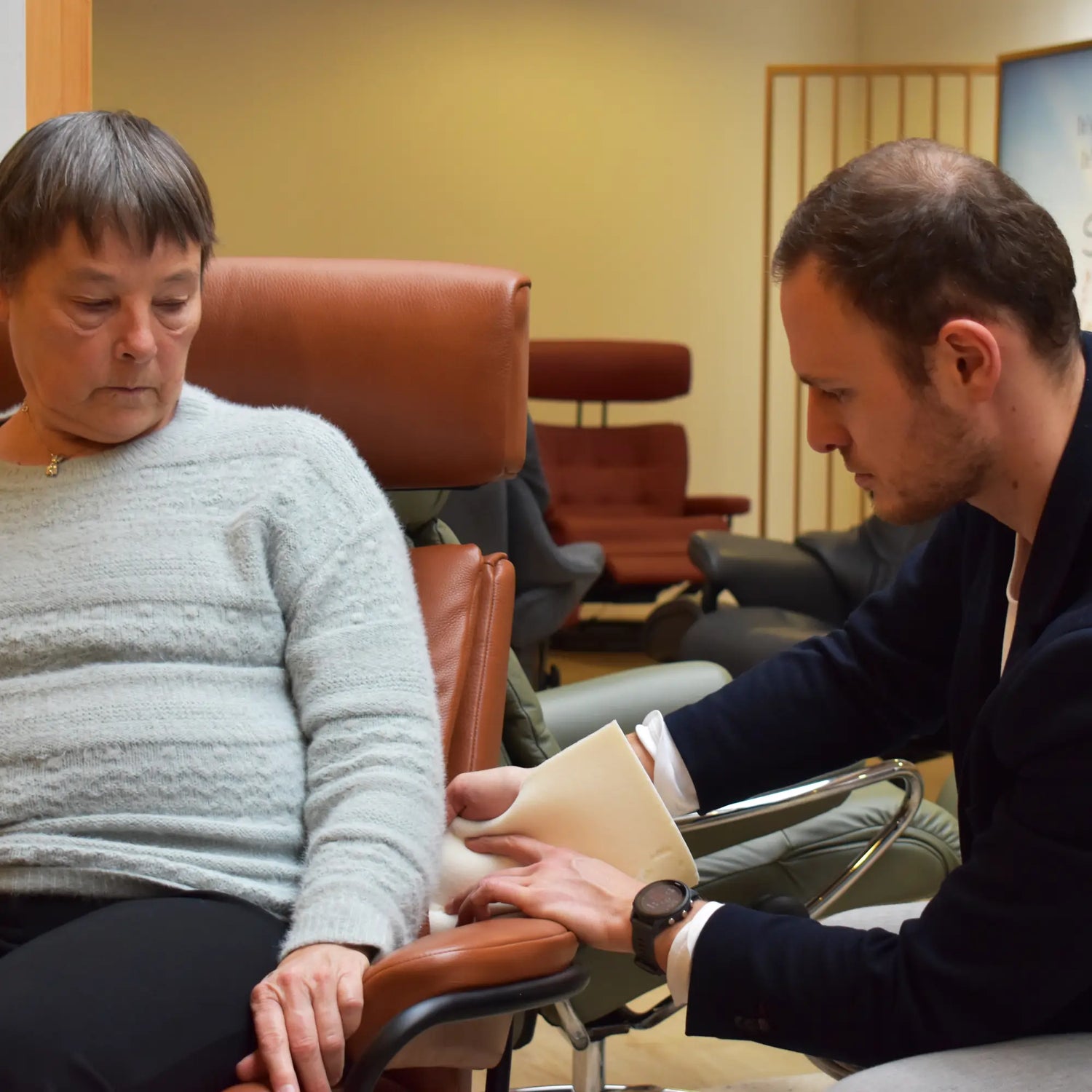
Good support in the lower back
Good lumbar support is essential. Your lower back has a hollow that needs to be filled. Without this support, your pelvis tilts backward, increasing pressure on your intervertebral discs, while also placing more strain on your capsule, ligaments, and muscles. Because not everyone has the same hollow curvature, it would be helpful if you could adjust the thickness of your lumbar support.
The same applies to the height at which the lumbar support should be installed. Where possible, we often opt for a lumbar support that is adjustable in height and thickness, for example, with movable cushions or an inflatable version. Of course, don't forget the correct seat depth to allow for contact with the lumbar support.
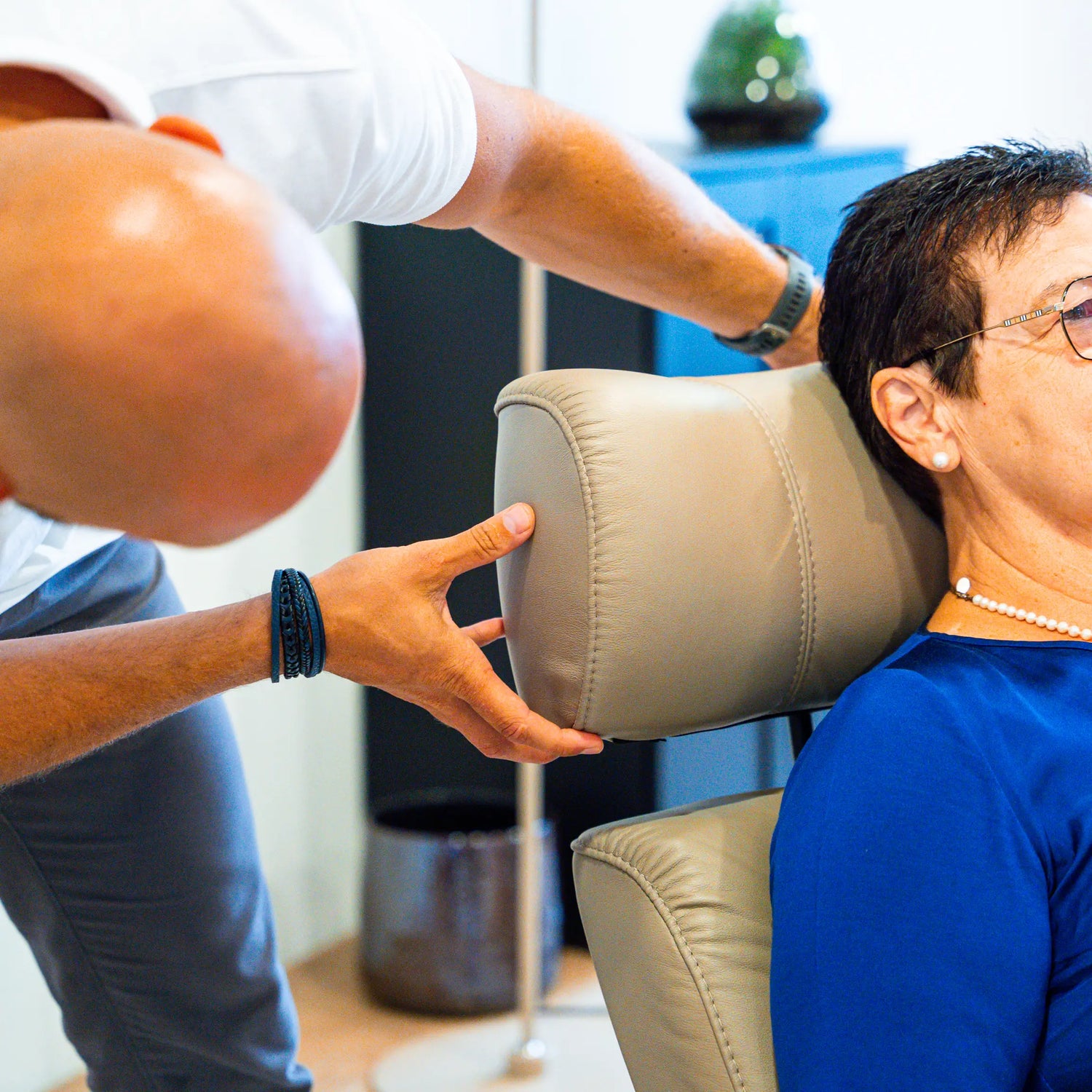
Adjustable neck support
Once you've found the right size for your backrest and neck support, it's always a plus if you can further adjust the neck support yourself. This includes size, thickness, and tilting. When sitting upright, the neck support can be positioned further back, while you need more forward support in a relaxed position with your legs up. Especially when reading or watching television, you need to be able to tilt the neck support forward.
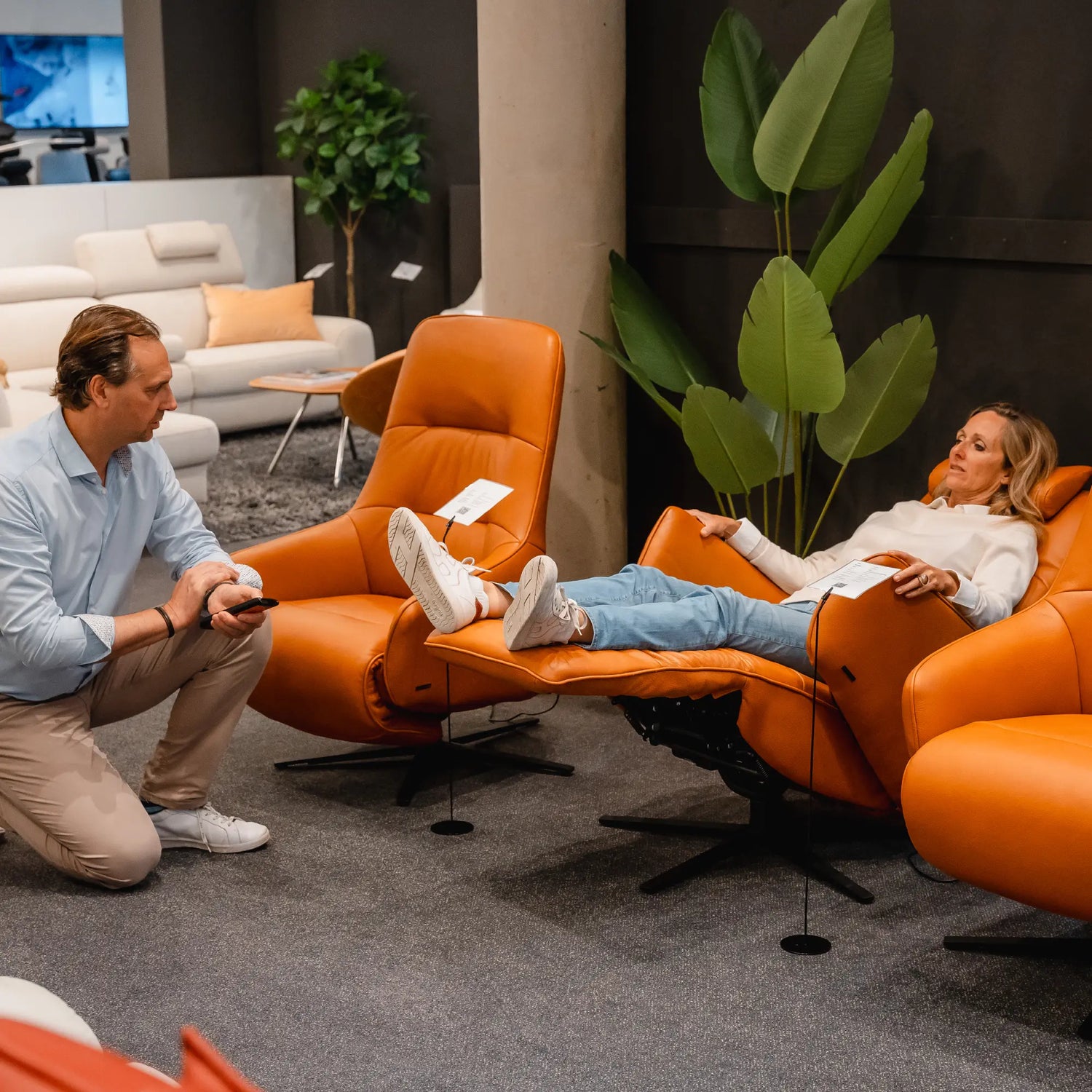
Heart balance relaxation function
If your feet are higher than your pelvis, you'll experience a beneficial relief in your legs. Gravity then allows venous blood to flow more easily back toward your heart, relieving tired or swollen legs. You can imagine the extreme situation where your legs are very high, and you might even feel congestion in your head. However, that's not the intention. With a heart balance position, we aim for a position with your feet approximately at heart level for balanced blood circulation.
This recliner's tilt function has an added benefit: because the entire chair reclines, you maintain back support without having to reposition yourself. With a recliner where only the backrest opens, you have to slide back a bit to regain proper back contact. Watch the video demonstrating this.
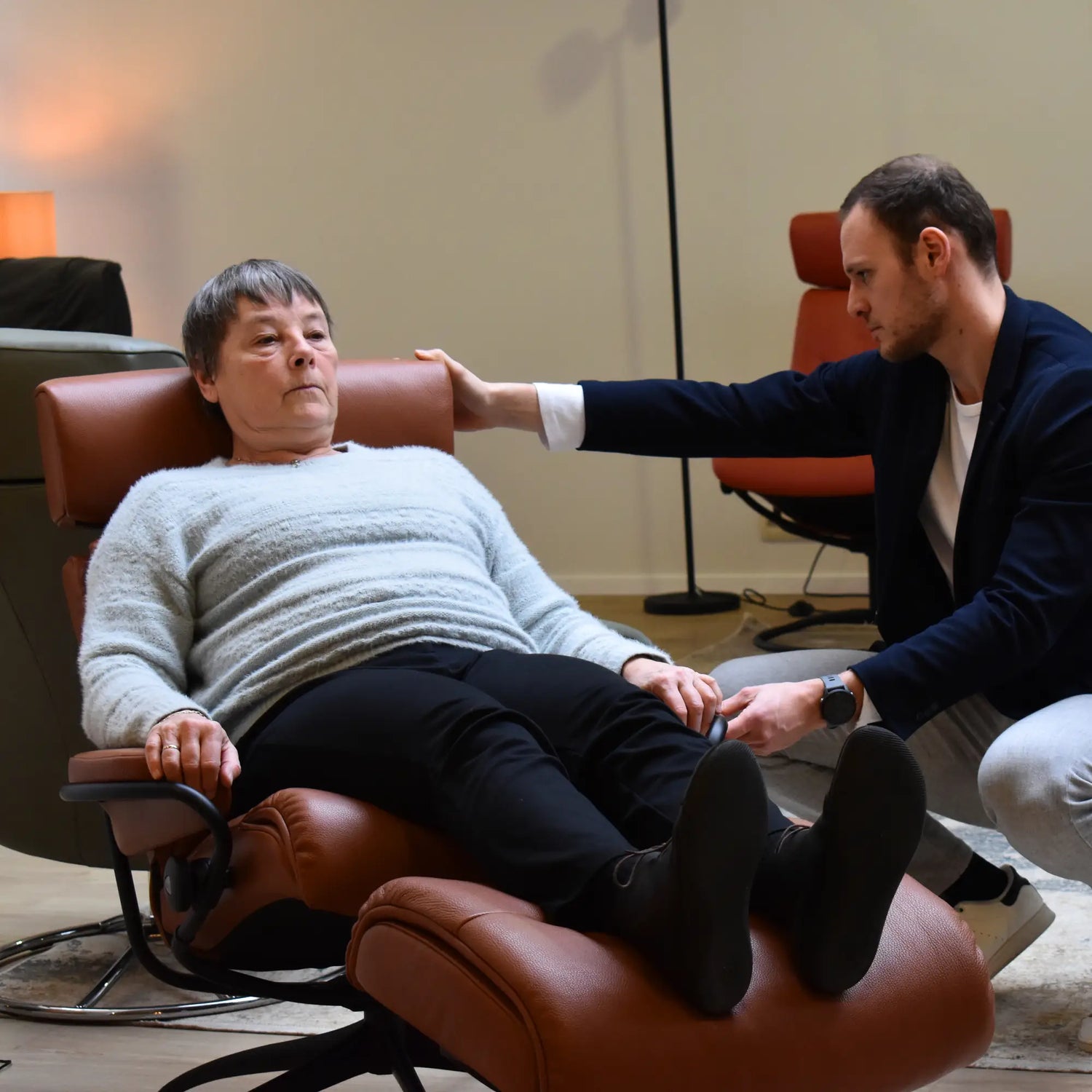
Our advisors are trained to recommend the right recliner for your individual body type. This way, you'll get the most out of your purchase and avoid back and neck problems.
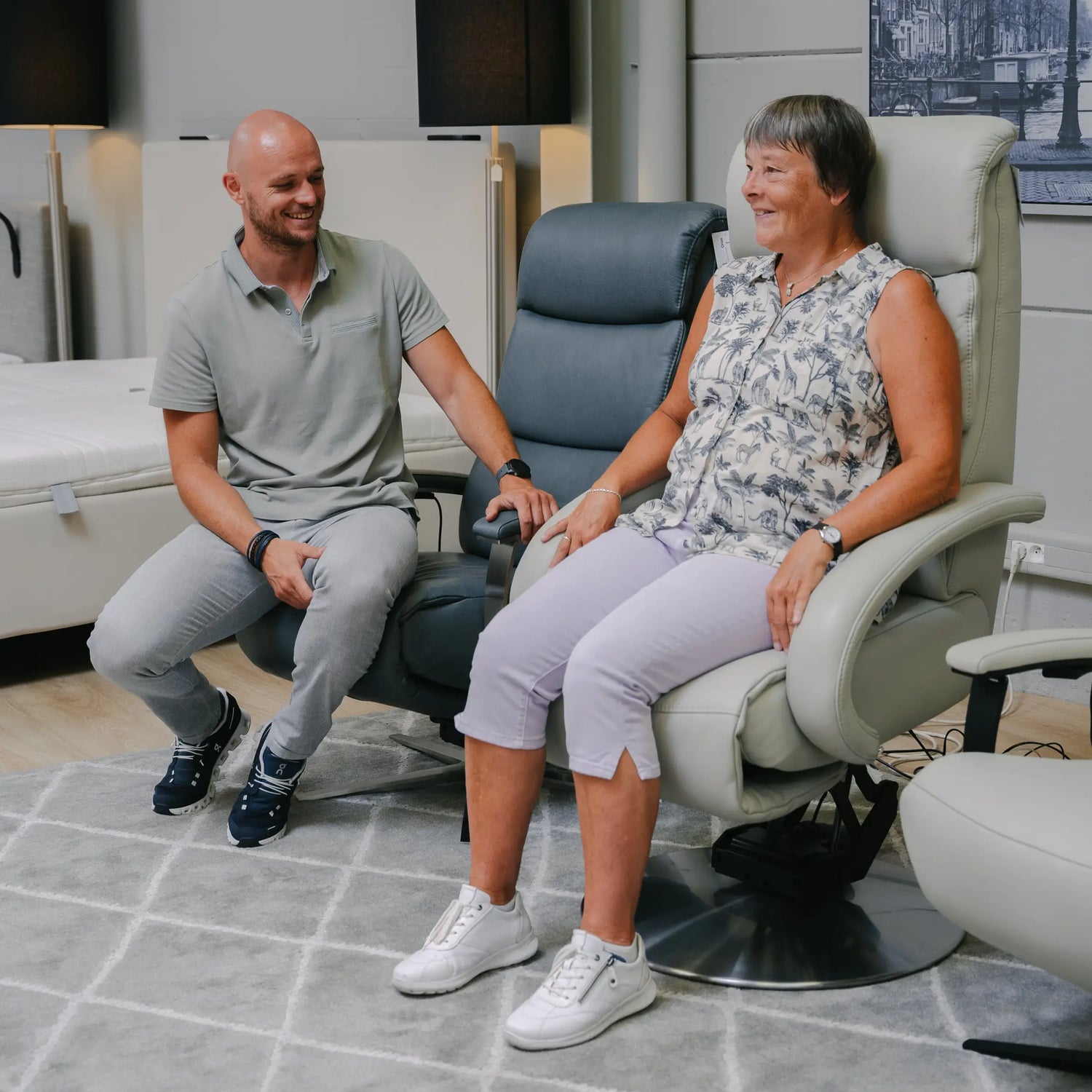
Relaxation chair with rise aid
Do you have knee or hip problems, or are you simply getting older and experiencing a loss of strength? Then a stand-up aid can be the perfect solution. Nobody wants to depend on others to get in and out of the chair. Think of it as a built-in lift function that safely raises your body weight to almost standing height. So you need virtually no muscle power to stand up.
Almost all of our recliners can be equipped with this feature. So you don't have to worry that this will automatically become a "nursing home model." You can have a beautiful, modern sofa that simply has this feature.
A good seat, but also a beautiful seat
The idea that a good ergonomic recliner is necessarily an outdated model is long gone. Our current collection combines ergonomics, relaxation features, and sizing with a stylish design! Of course, you can order the recliner entirely to your own taste, with a wide range of beautiful leathers, fabrics, and various bases.
Our relaxation chairs
-
Ergonomic Orion medium relaxation chair
Regular price €1.194,00 EURRegular priceUnit price per€3.981,00 EURSale price €1.194,00 EURSale -
Ergonomic relaxation chair Medium
Regular price €2.725,00 EURRegular priceUnit price per€5.451,00 EURSale price €2.725,00 EURSale -
Ergonomic relaxation chair Large
Regular price €2.350,00 EURRegular priceUnit price per€4.701,00 EURSale price €2.350,00 EURSale -
Ergonomic relaxation chair Small
Regular price €3.000,00 EURRegular priceUnit price per€6.000,00 EURSale price €3.000,00 EURSale -
Ergonomic relaxation chair Carlo
Regular price €2.073,00 EURRegular priceUnit price per€4.147,00 EURSale price €2.073,00 EURSale -
Ergonomic relaxation chair Phil
Regular price €2.121,00 EURRegular priceUnit price per€4.243,00 EURSale price €2.121,00 EURSale -
Piet ergonomic relaxation chair
Regular price €2.109,00 EURRegular priceUnit price per€4.219,00 EURSale price €2.109,00 EURSale -
Leo large relaxation chair
Regular price €1.658,00 EURRegular priceUnit price per€3.316,00 EURSale price €1.658,00 EURSale -
Ergonomic relaxation chair Berg (new)
Regular price €2.763,60 EURRegular priceUnit price per€3.948,00 EURSale price €2.763,60 EURSale -
Ergonomic relaxation chair Berg (new)
Regular price €3.021,75 EURRegular priceUnit price per€4.029,00 EURSale price €3.021,75 EURSale -
ergonomic relax chair Cygnus medium
Regular price €2.428,00 EURRegular priceUnit price per -
 Sale
SaleKokon Varier
Regular price €3.989,00 EURRegular priceUnit price per€5.699,00 EURSale price €3.989,00 EURSale -
Peel Me with footstool
Regular price €4.749,00 EURRegular priceUnit price per -
Taurus Small ergonomic recliner
Regular price €4.279,00 EURRegular priceUnit price per -
ergonomic Taurus medium relaxation chair
Regular price €4.371,00 EURRegular priceUnit price per -
Ergonomic relaxation chair Cocoon (Large)
Regular price €4.851,00 EURRegular priceUnit price per -
Ergonomic relax Charles
Regular price €4.234,00 EURRegular priceUnit price per -
Ergonomic relaxation chair Scorpio
Regular price €1.934,00 EURRegular priceUnit price per€2.764,00 EURSale price €1.934,00 EURSale -
Ergonomic relax View
Regular price €4.516,00 EURRegular priceUnit price per
